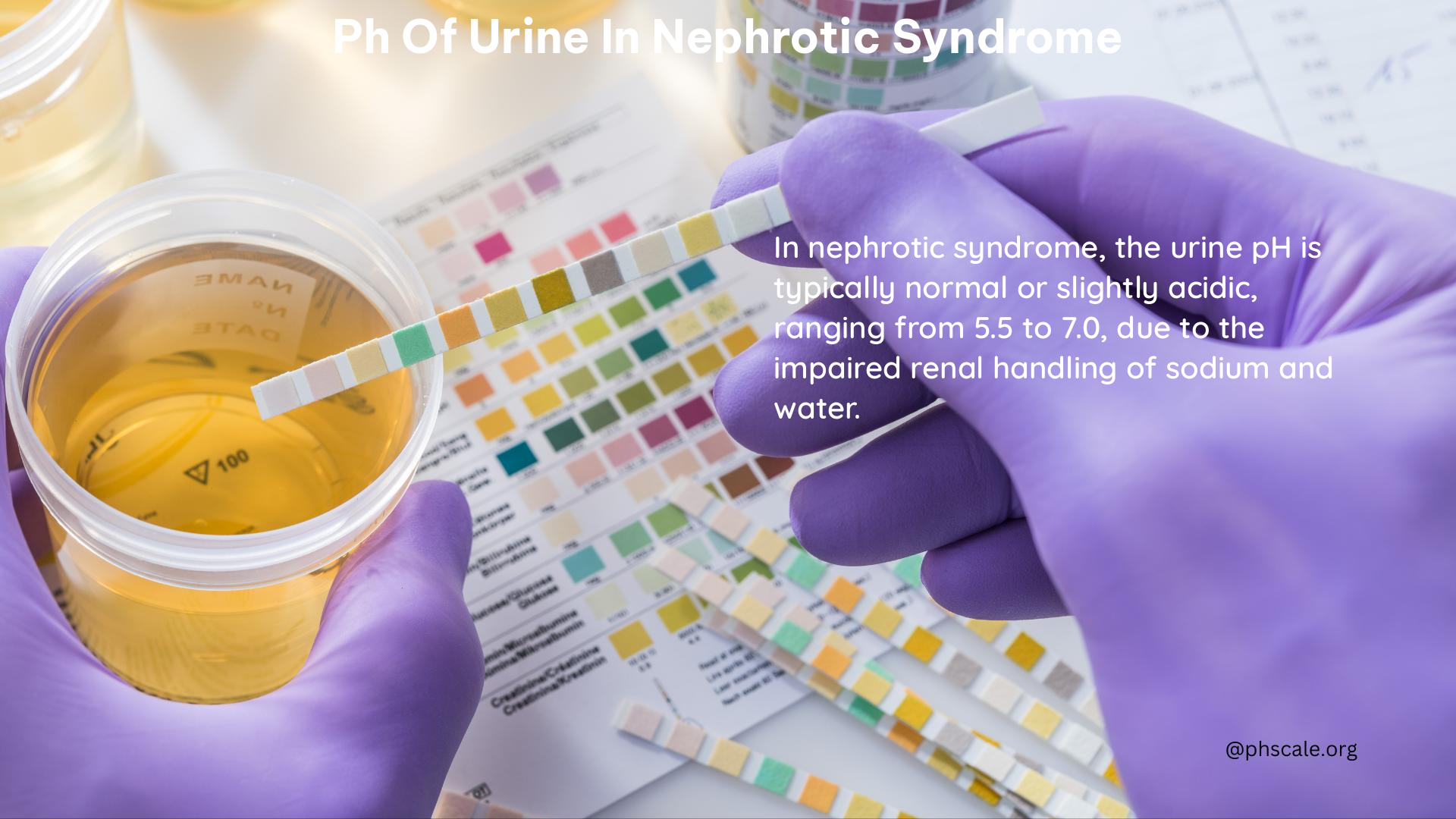The pH of urine in nephrotic syndrome is a crucial parameter that can provide valuable insights into the diagnosis and management of this kidney disorder. Understanding the significance of urine pH and its relationship with acid-base disturbances, iron speciation, and predictive value for chronic kidney disease is essential for healthcare professionals to develop effective treatment strategies.
Background and Significance
Nephrotic syndrome is a kidney disorder characterized by excessive proteinuria, edema, and lipiduria. The pH of urine in nephrotic syndrome can be affected by various factors, including the underlying disease process and the presence of acid–base disturbances.
pH Range and Significance

Studies have shown that the median pH of urine in nephrotic syndrome is slightly alkalotic, ranging from 7.42 to 7.45. This alkalinity is attributed to the presence of respiratory alkalosis, which is common in nephrotic syndrome due to respiratory dysfunction and pulmonary interstitial edema caused by hypoalbuminemia.
Acid–Base Disturbances
Acid–base disturbances are common in nephrotic syndrome, with metabolic alkalosis being the most prevalent. The Stewart model, which takes into account serum albumin levels, is more accurate in diagnosing acid–base disturbances than the traditional Boston model. The Stewart model can help identify metabolic alkalosis or acidosis with a normal anion gap by comparing delta A TOT (total concentration of non-volatile weak acids) and delta SIDa (apparent strong ion difference).
Urinary Iron Speciation
Urine pH plays a significant role in iron speciation in nephrotic syndrome. At an alkaline pH, iron remains bound to transferrin and is excreted in the urine. However, as urine pH decreases below 6, iron dissociates from transferrin and exists in a soluble, ultrafiltrable, and labile state, which can catalyze free radical formation and cause tubulointerstitial disease.
Predictive Value of Urine pH
Low urine pH has been identified as an independent predictor of chronic kidney disease (CKD). A study found that subjects with a fasting urine pH of 5.0–5.5 had a higher risk of developing stage 3 CKD compared to those with a pH of 6.5–7.0. Conversely, high spontaneous and persistent urinary pH (≥6.5) has been shown to be protective of renal function in idiopathic membranous nephropathy.
Home Remedies and Balancing pH
To balance urine pH, individuals with nephrotic syndrome can consider the following home remedies:
- Dietary Changes: Consuming a diet rich in fruits, vegetables, and whole grains can help maintain a healthy urine pH. Foods with high alkaline content, such as lemons, limes, and melons, can help increase urine pH.
- Hydration: Adequate hydration is essential to maintain a healthy urine pH. Drinking plenty of water can help dilute the urine and reduce the concentration of acidic substances.
- Supplements: Certain supplements like potassium citrate and sodium bicarbonate can help increase urine pH. However, it is essential to consult a healthcare professional before adding any supplements to the diet.
Contaminants and Chemicals
Urine in nephrotic syndrome may contain various contaminants and chemicals, including:
- Protein: Excessive proteinuria is a hallmark of nephrotic syndrome, and proteins like albumin, IgG, and IgA can affect urine pH.
- Iron: Iron speciation in urine can be influenced by pH, leading to the formation of reactive iron species that can cause oxidative stress and tissue damage.
- Electrolytes: Electrolyte imbalances, particularly potassium and sodium, can affect urine pH and contribute to acid–base disturbances.
References:
- https://www.ncbi.nlm.nih.gov/pmc/articles/PMC5648741/
- https://www.sciencedirect.com/science/article/pii/0272638695900144/pdf?md5=8f27e579c92338b01340c62f4a056b32&pid=1-s2.0-0272638695900144-main.pdf
- https://pubmed.ncbi.nlm.nih.gov/7531396/
- https://karger.com/kbr/article-abstract/35/2/77/187784/Low-Urine-pH-Is-a-Predictor-of-Chronic-Kidney?redirectedFrom=fulltext
- https://onlinelibrary.wiley.com/doi/10.1155/2015/730234
